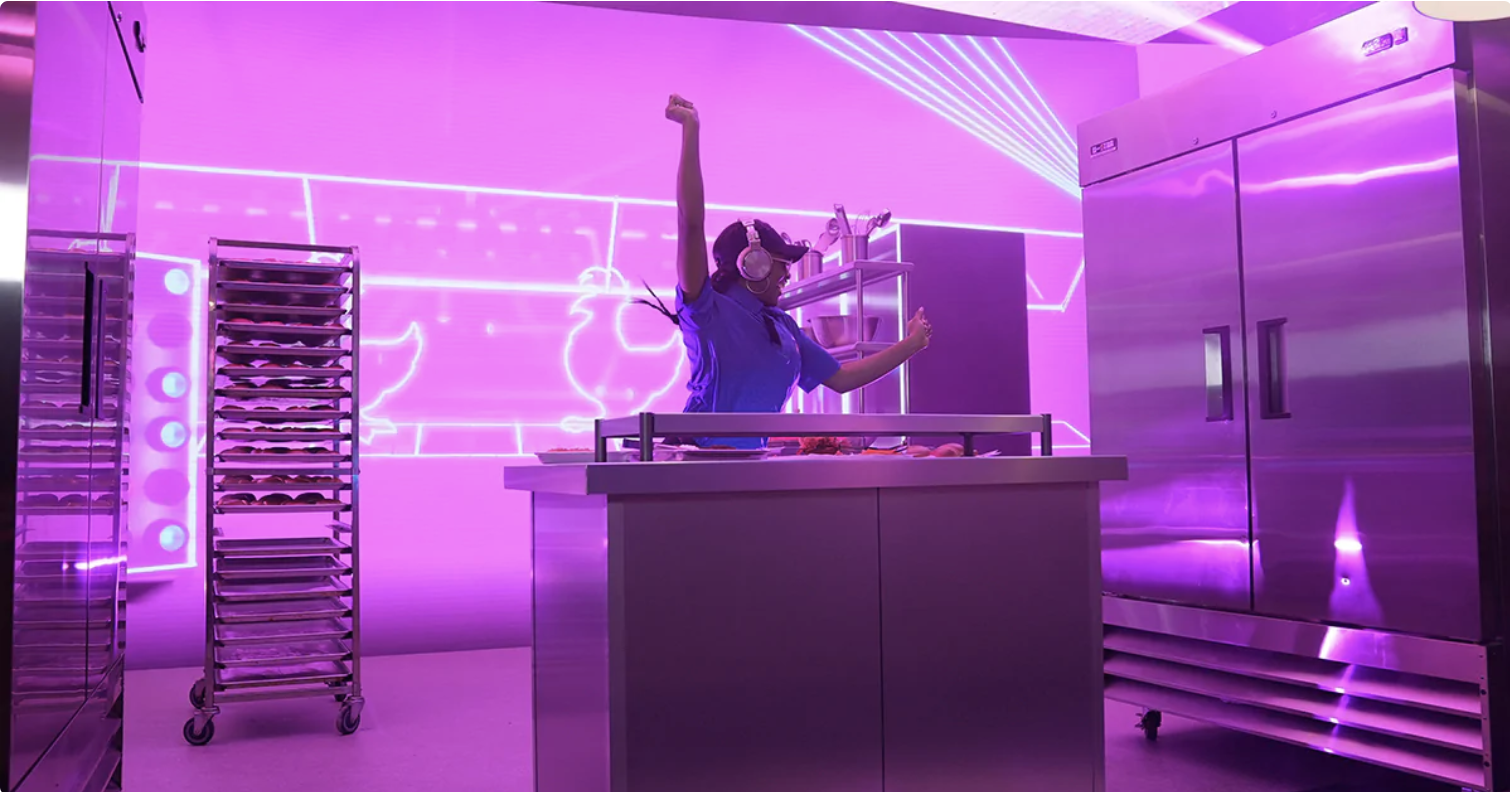The technology is disrupting the ad space, from creative brief to post-production
The band Jomo and The Possum Posse made its claim to fame in 2011 with the parody series “Guy On A Buffalo,” which chronicles the adventures of Buffalo Jones and features the twangy country vocals of lead singer Jomo Edwards. 12 years later, southern fast food giant Zaxby’s decided to reinvent the spots with some deep fried capitalism. CMO Joel Bulger is tremendously proud of “Guy On A Buffalo Wing,” but he admits there is one technology that really could have brought the production to the next level—extended reality.
“What would that spot have been if we could actually put (the star) in the Old West on a buffalo wing?” he said, alluding to the evident use of a backdrop in the ad. “How much further can we push our ideas when we know the technology can support whatever we come up with?”
Zaxby’s partnered with production studios Silver Spoon and Schrom to launch its latest creative for its club sandwich, which features a seamless transition from the restaurant to a night life scene with flashing lights. The restaurant chain recently got its hands on LED walls and extended reality (XR), an immersive environment traditionally that is reserved for film but steadily making its way into the commercial production space. The extended reality stage is the only real-time wall in the New York area, according to Silver Spoon and Schrom.
“[XR] is basically opening a whole new world to a playroom that nobody has ever seen before,” said Schrom executive producer Carl Sturges. “There’s such a variety of applications for this that nobody has even realized yet.”

Why XR Matters
According to Laura Herzing, executive producer at Silver Spoon, XR takes the guess work out of commercial production and limits post-production adjustments, resulting in a more realistic final product.
“The technology allows us to have so much more flexibility in how we’re shooting commercial content,” she said, noting that shoots have been previously limited to certain times of day, like golden hour. “It gives you the ability to adjust colors and lighting on the fly.”
The realistic lighting and immersive environment can be easily altered during a shoot and as the camera moves, the wall adjusts. Being able to see the final product as you are shooting—instead of speculating how things will look after the editing process—is a total game changer, according to Herzing.
“If you come in and something isn’t right, you can change it on shoot day,” she said. “There’s more upfront lead time needed than in a traditional commercial production shoot, but you’re reaping the benefits on the back end. It’s a little bit of a give and take, but we’re here to help clients plan accordingly for that.”
Taking the guess work out of lighting and color means that producers can focus on talent performance and the look of the product, according to Zaxby’s producer Liz Stovall. The technology not only slashes post-production costs and production hiccups, but it is also changes the way creative shops like Tombras, Zaxby’s agency of record, approach commercials. Referring to the Zaxby’s club sandwich spot, Bulger raved that “you look at the monitors and you can’t believe that’s not really a club.”
“We can hand this tool to our creative resources and say ‘What more can we do now?’” he said. “It’s already changing the way we’re planning our next set of promotions and thinking about what is possible.”

